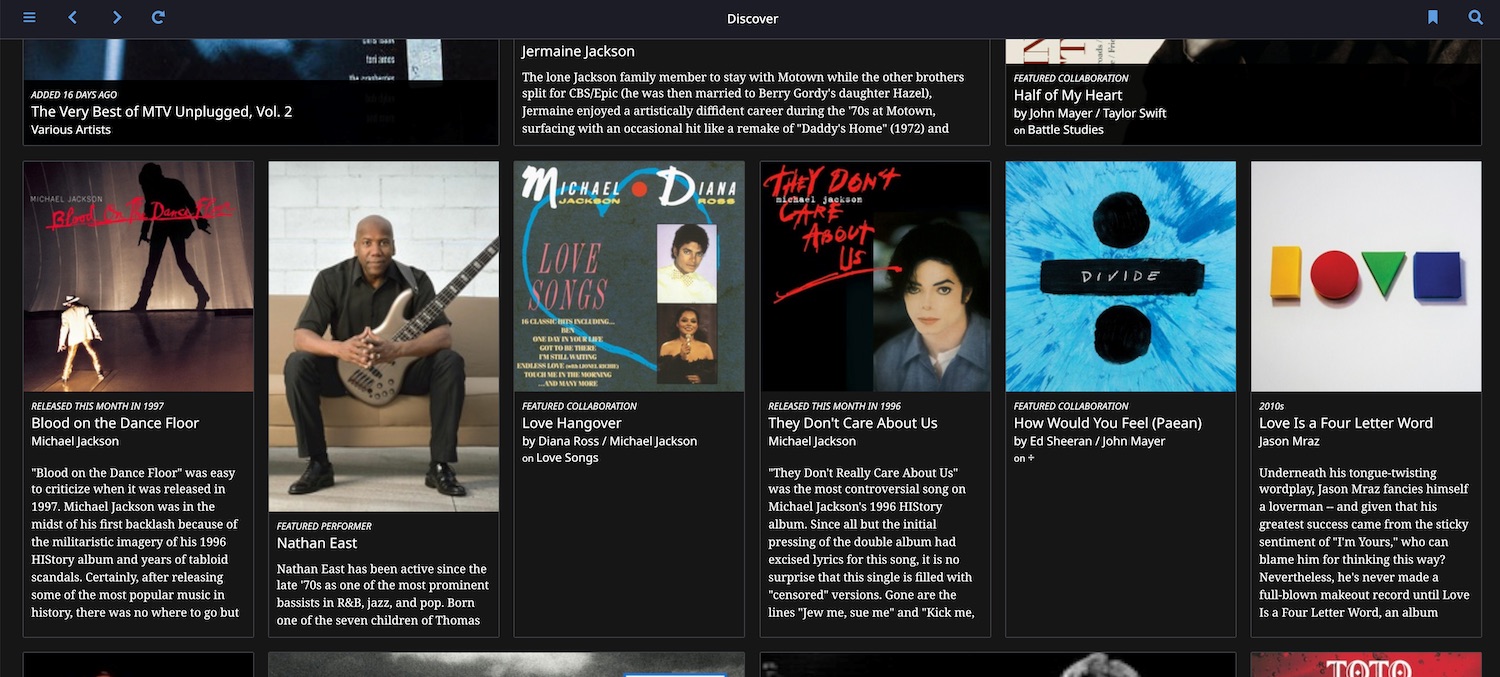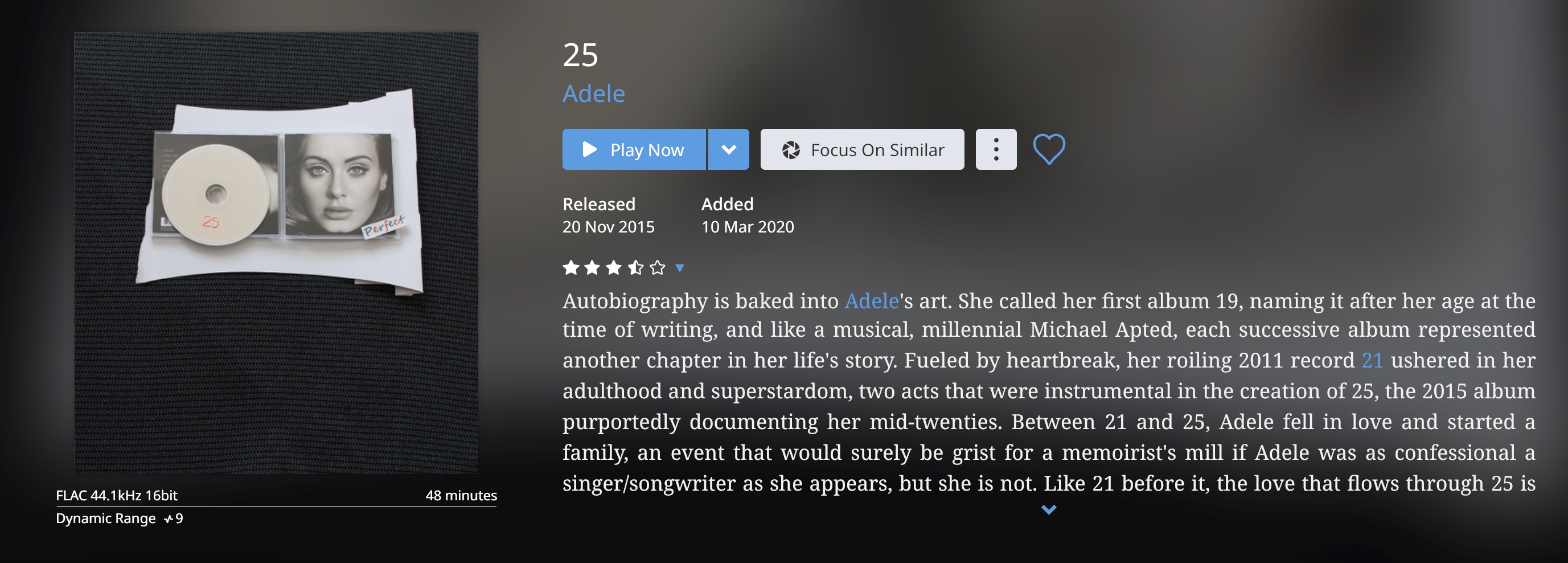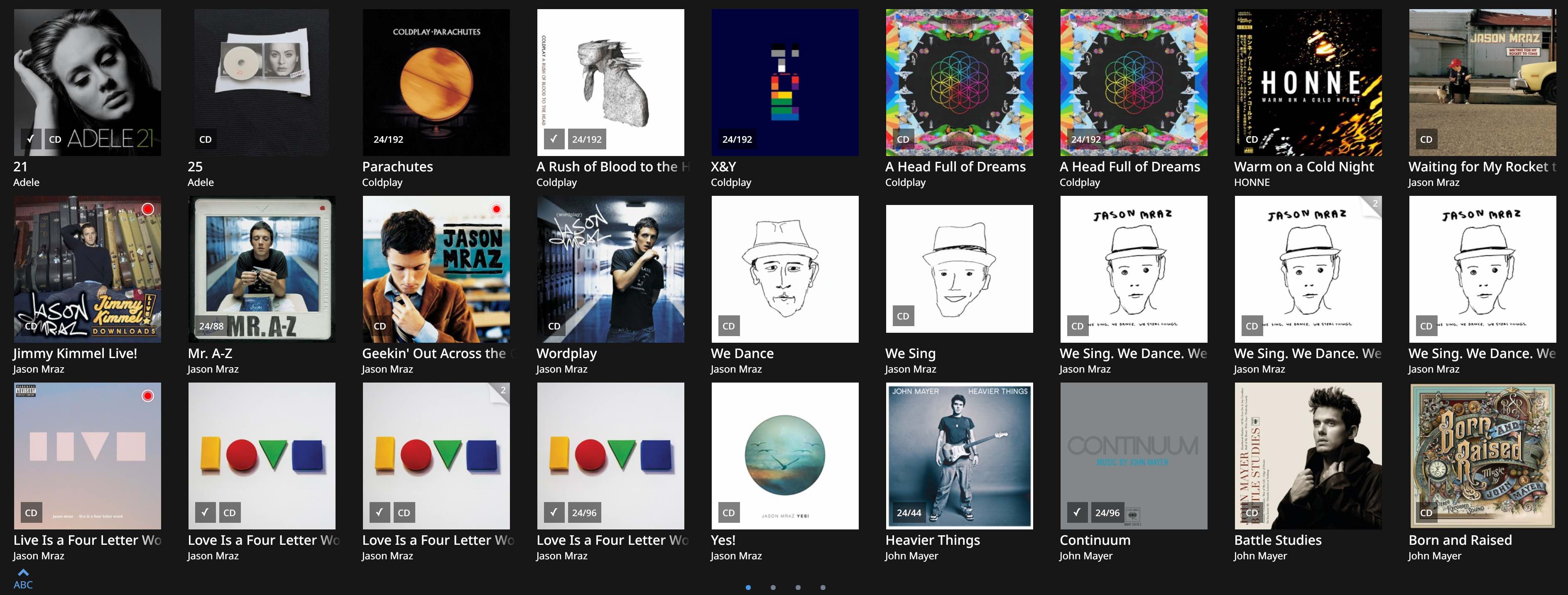After installing Roon for the first time I’ve been using it everyday. How I use Roon has changed along the way. A mixer was directly plugged into my Hackintosh but now it’s plugged to a Raspberry Pi. I can now listen to music even though my Hackintosh is not powered.
Discover
This feature alone I think is worth half of the subscription price. Roon with its awesome metadata power will recommend you songs, albums, artists and my favorite is artists you don’t even know you had in your library.

Let’s focus on this screen here. I didn’t know I had Nathan East on my library. As it turns out, he filled in as a bass player in many of the artists I have in my library. This is mind blowing for me, I wouldn’t have known this by myself. Roon’s metadata is VERY POWERFUL, it lets me dive deep into my library.

Nathan East played in a lot of Michael Jackson’s tracks.
Roon Apps
These days, we have phones, tablets, desktops, laptop, etc. Roon in its infinite wisdom understands that. Roon has an app for my Macs, iPhone and Samsung Tablet. What they don’t have is a web interface. I think their assumption is spot on here, people who buys the subscription would likely own multiple devices but won’t appreciate a web browser.
Roon Bridge
This I definitely love. I’m using my a Raspberry Pi connected with a USB mixer to drive my speakers. Roon Bridge allows me to stream music to it. Roon also partners with various companies enabling them to receive high resolution audio streaming to their appliances.
For my Raspberry Pi I opted to use a USB mixer so that I can have a hardware volume button I can play with. There are other solutions such as HiFiBerry. Using a hat would require me to log in into the Pi to adjust volume. From the CLI it’s easy enough to use alsamixer but that’s a lot of steps for something trivial.
You’d argue why not just use Roon’s volume control, I do, I use it everyday. But there are moments when I just wanna go loud. I use the mixer’s volume control when I want to.
Another reason to love Roon Bridge combined with a Pi is the ability to plug in any sound card or DAC I want to the Pi. If I wanna go over the top high end, I can connect a 192kHz capable sound card to it. It’s not that expensive these days to be able to do this. I have a Behringer UMC202HD that is capable to do this and it costs only $130. Probably later when my speakers are upgraded.
Focus
Let me start with these screenshots.

Clicking on Focus On Similar gives me this.

Again this is a demonstration of how powerful Roon’s metadata is. I can think of multiple ways of how Roon achieves this but I’m just a happy user. Features like this will make sure the whole breadth of your library gets coverage.
I’m an Oasis guy, every since the Definitely Maybe album, I was hooked. All of Oasis’ tracks are in my library. When I’m focusing to Oasis or maybe focusing on Coldplay, Roon can play Oasis songs that isn’t at all mainstream. I mean people who’d know the song wouldn’t have heard it from the radio. It’s a welcomed surprise for me. The larger your library, the more of these little surprises will surface itself.
While I’m writing this, Roon is now playing Oasis - Born on a Different Cloud. Who would know this song if not an avid fan? In all honesty Roon understands that special thing a fan would appreciate towards their favorite artists. Again this is worth the subscription, no less.
The above are the features I use every single day. Trust me, Roon will make you fall in love again with music. I’m not being over dramatic, it’s just is. They advertise high resolution audio but the number 1 selling point IMO is their understanding of the audience. For me when listening to music, it brings back memories when I first listen to a song. For that reason I think Roon did a great job.
If you love music, you’ll love Roon, period.
